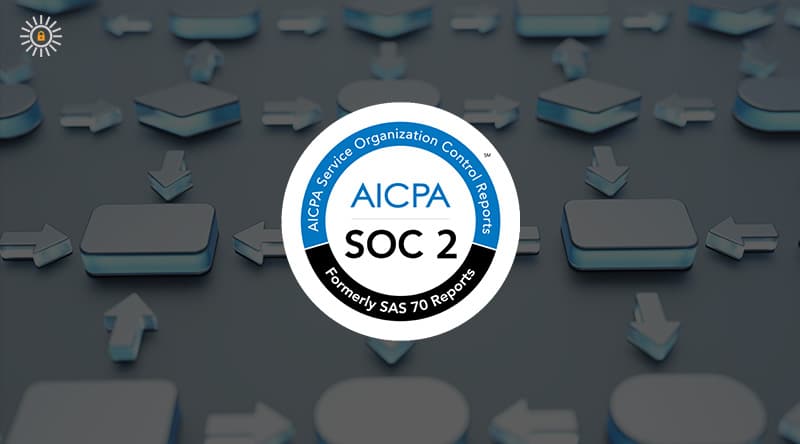- January 24, 2023
- Tags:

Becoming SOC 2-Compliant
The Service Organization Controls 2 (SOC 2) is a compliance standard for information security administered by the American Institute of Certified Public Accountants (AICPA). Its objective is to assess and validate an organization’s cybersecurity robustness. To be eligible for SOC 2 compliance, a company must establish a cybersecurity program that complies with all relevant regulations and pass an annual audit by a CPA affiliated with the AICPA. The auditor investigates and evaluates the cybersecurity controls according to the SOC 2 standards and then creates a report that details their findings.
The primary goal of the SOC 2 security principle is to prevent the unauthorized use of assets and data that organizations store or process. The SOC 2 principle mandates organizations to implement access controls across the organization. It aims to prevent malicious attacks, unauthorized data deletion, undocumented alteration or misuse, and disclosure of confidential information. However, organizations operating in the banking or financial industry where privacy and confidentiality are necessary may require higher compliance standards.
When an organization complies with SOC 2 standards, it can better protect itself against cybersecurity threats and prevent breaches. Improved information security practices provide these benefits via the SOC 2 guidelines and a competitive advantage because clients prefer service providers who can demonstrate robust information security processes, particularly for cloud services and IT services.
Operating under the AICPA SOC 2 Type 2 Controls
As a security compliance framework, SOC 2 Type 2 consists of internal control reports that document how a company secures customer information and evaluates the effectiveness of operational controls in place. Companies that want to gain SOC 2 Type 2 compliance undergo an annual SOC 2 Type 2 audit and be assessed on one or more principles of the AICPA Trust Services Criteria (TSC). Only then can they achieve SOC 2 Type 2 compliance.
The SOC 2 compliance checklist includes all the controls covering the basic safety standards of the organization. It checks the access controls to verify logical and physical restrictions on assets and prevent unauthorized personnel from accessing them. The compliance checklist calls for monitoring all system operations to detect and resolve deviations from organizational procedures. It also checks organizations’ methods and activities to identify, respond to, and mitigate risks.
GoldSky Security now operates under the AICPA SOC 2 TYPE 2 controls. In addition, it successfully undergoes annual third-party SOC 2 Type 2 Audits to ensure continuous compliance with SOC 2 Type 2 security controls requirements for handling customer information.
With SOC 2 Type 2 compliance, our annual third-party audit includes a close analysis and testing of all security controls within our environment. The security controls within our environment are tested and evaluated to determine their operational state. Then, by assessing how said controls are designed, deployed, and maintained and their efficacy, we can achieve high levels of security resilience within diverse business verticals at GoldSky.
Goldsky’s forward-thinking approach to cybersecurity resilience ensures compliance with industry regulations and standards while creating innovative ways to safeguard our sensitive data and that of our clients. However, before conducting each SOC 2 Type 2 audit, we ensure that the following steps are completed:
● Defining Scope and Objectives: Understanding the third-party auditor’s scope and objective helps clarify which trust service principles (TSPs) should apply to the process. Identifying the relevant TSP is necessary for determining which systems, policies, and procedures support those principles and organizing internal controls to match these needs. This step reduces scope creep, unnecessary time, and financial expenditure that could impact business continuity.
● Documenting Policies and Procedures: Complete documentation of information security policies according to the TSPs is required for SOC 2 Type 2 audits — the auditor typically leverages these to evaluate the effectiveness of security controls for a detailed and thorough post-audit report. The SOC 2 documentation is proof of implementing policies, procedures, and other internal controls for secure data access and storage per the compliance framework. In addition, the documentation defines policies and takes action on any weaknesses revealed during inspections or audits within a specific period.
● Performing Readiness Assessments: To determine how well prepared we are for each annual SOC 2 Type 2 audit, we often conduct a readiness assessment (and gap analysis) to determine our preparedness for the SOC 2 Type 2 audit. This could be a trial run for the actual audit, thus providing us with an opportunity to assess the robustness of current security controls, rules, processes, and procedures, to pinpoint any potential vulnerability.
Conclusion
Most times, small to midsize businesses with limited resources need to assess the security compliance level of a potential security services provider. However, collaborating with a trusted cybersecurity services provider is one of the primary requirements for ensuring your organization’s security resilience. Therefore, when considering a security solution, it is imperative to seek out cybersecurity partners that have undergone rigorous compliance for their internal environment, such as SOC 2 Type 2.
Being a SOC 2 Type 2 compliant organization, GoldSky Security employs battle-tested security measures to detect and prevent security incidents within our environment and that of our clients. Additionally, by operating under the AICPA SOC 2 Type 2 controls, our processes are independently audited annually by third-party SOC 2 Type 2 auditors to ascertain our worthiness to help protect our clients’ business-critical assets.








